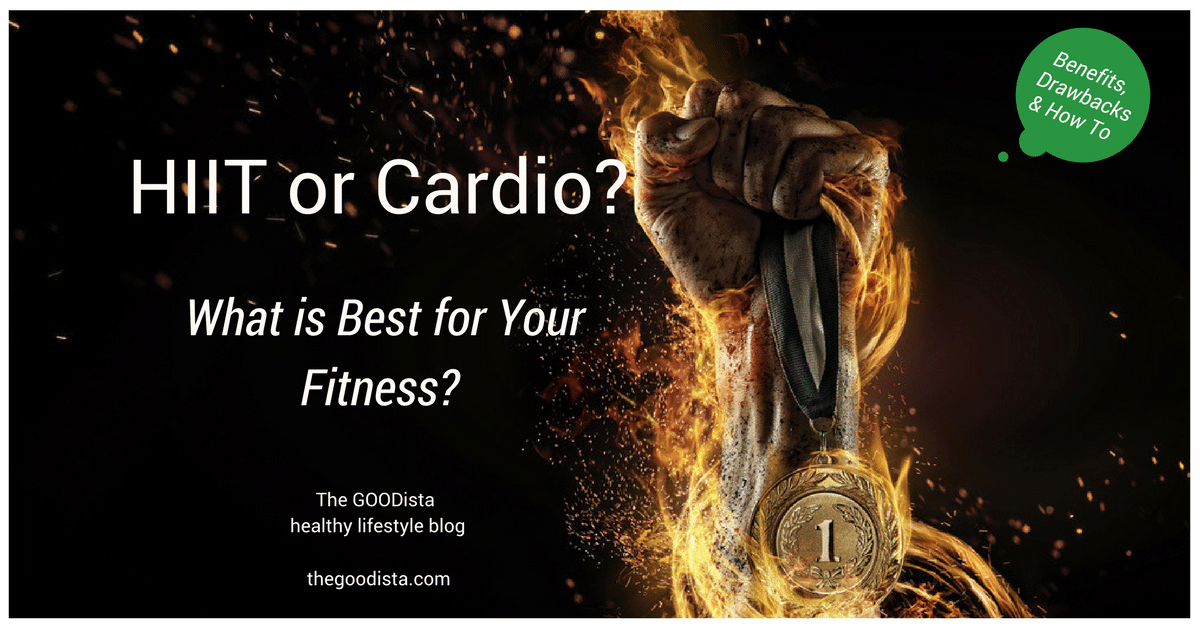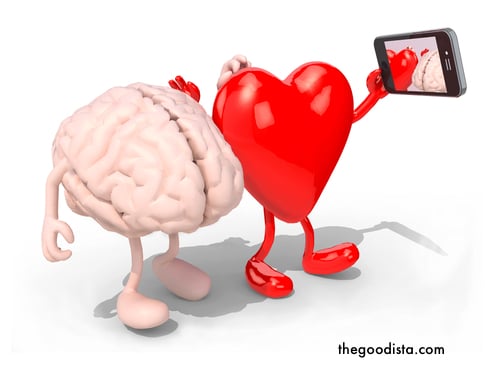Are you a HIIT or cardio fan? Many fitness seekers are convinced that there is only one form that keeps them in shape. Arguments for one or another are plentiful. We look at two regular guys who cannot stop and listen to what most experts now know: That you need to mix things up. The GOODista takes a good look at High-Intensity Interval Training (HIIT) and steady paced Cardio. HIIT or cardio? Which is best – and for what? Check out workout alternatives, and get ideas how to increase your overall level of fitness. Are you fooling yourself when you stick to your conviction that you must choose HIIT or cardio? Probably!
HIIT or Cardio: Agree to Disagree?
What is best? HIIT or steady paced cardio? Dave and Andy agree to disagree on most things for the sake of family peace, and in honour of the profession they both share. Politics, and the state of the world, are topics they don’t approach when they get together, as they both know it would end in a heated discussion.
Fitness however, is one area where they completely disagree. Dave swears by HIIT and Andy knows that a steady cardio is best.
Who is right? Could it be that they are both wrong – and that the key question they forgot to ask was: Best for what? In this post we look at what form of exercise provides the optimal level of fitness, what promotes the most effective fat burn, and how to find what is most suited for an active life on the road.
Countless fitness trends have come and gone over the years. Each one promises to help you slim down, tone up, and achieve your fitness goals. Everyone has a different goal in mind when they commit to a fitness plan, and with hard work and dedication most exercise programs will produce results. But what happens if you can’t carve out 60 minutes a day to get your sweat on or you find it hard to stick to a specific fitness plan?
The answer can be a run, a bicycle ride or a fast walk. This is what cardio lovers promote. Time pressed individuals who want to maximise swear by HIIT or Tabata training. Let’s look at what HIIT and steady paced cardio delivers and why.
HIIT – What Is It?
Whether you need a quick burn or want to shake up your routine – Tabata training will deliver.
Tabata is a form of high-intensity interval training, more commonly known as HIIT. It was invented by Dr. Izumi Tabata in 1996.
During his research, Tabata divided the athletes into two groups and gave each group a different workout plan. Group A worked out with moderate intensity for 60 minutes, five days a week. Group B worked out at a high-intensity level four days a week for only 4 minutes and 20 seconds. Both groups were monitored over a six-week period. At the end of the study, they compared the VO2 max (maximal oxygen uptake) of the athletes in both groups and discovered the high-intensity training performed by Group B had a greater impact on both their aerobic and anaerobic systems. It was concluded that working out in four-minute high-intensity intervals was more beneficial than working out for 60 minutes at a moderate pace.
HIIT or Cardio? Benefits of Tabata
Improved Stamina: Tabata improves your aerobic and anaerobic threshold. Your aerobic capacity is a measurement of your maximum oxygen uptake during exercise. Your body requires more oxygen when you work out. The rate at which your muscles and tissue are able to absorb oxygen is known as your VO2 max. Most people have a VO2 max between 30 and 60 ml/kg/min. The higher your VO2 max, the more potential you have for aerobic endurance. As you do Tabata training, your VO2 max will improve, along with your stamina.
Anaerobic capacity refers to the maximum amount of energy your body can produce without oxygen. By increasing your anaerobic capacity, you can exert yourself at a maximum effort for a longer period of time. An easy way to measure improvements in your anaerobic capacity is to time yourself while sprinting at 100 percent effort. Record your time and distance. After six weeks of Tabata training, revisit this challenge. You will be amazed at how much further you can run at maximum effort.
Increased Metabolic Rate and Fat Loss: High-intensity interval training increases our metabolic rate by almost 15 times the basal metabolic rate. Your basal metabolic rate is the amount of energy your body uses naturally at rest. Not only are you burning an average of 15 calories a minute, but the increased demand Tabata puts on your body will increase your BMR and torch fat for hours after your workout.
Muscle Tissue Retention: If you want to improve your cardiovascular fitness but are concerned about losing hard-earned muscle, Tabata training is for you. The stress placed on your muscle tissue during Tabata sends signals to you body that more muscle tissue is needed and the ratio of lean body mass to fat will increase. If you choose full-body workouts that use more muscle mass, you could actually end up increasing your muscle tissue.
No Time Constraints: No time to workout? Can’t get to the gym? These excuses won’t fly when it comes to Tabata training. All you need are four minutes and a pair of sneakers to complete this workout.
Note: A fellow blogger has written a great article about The Benefits of Tabata Workouts – and gave me permission to reproduce part of it here above.
Cardio – What Is It?
Steady-state cardio workouts don’t require more than a pair of good trainers, and a steady pace forwards. It’s not something we have to learn how to master. Everyone can do it, even if it takes a bit of getting used to as the heart starts pumping. Cardio is any activity that raises the heart beat – and you can run, walk very fast, jog or dance.
Perform your chosen activity at a steady, manageable pace (60 to 70 percent of maximal capacity) for 20 minutes or more. You should aim for a heart rate of 120 to 150 beats per minute.
Steady-state cardio is aerobic: It requires oxygen and is fuelled mostly by stored fat. No-frills, steady-state cardio has long been a cornerstone in training programs. And with good reason. The vast majority of physical functions — from digestion to breathing to everyday movements like walking, standing, and sleeping — are powered by the aerobic system.
HIIT or Cardio? Benefits of Cardio
Heart Health – Your heart is a muscle and if you fail to work it, it will weaken over time and this can cause a variety of negative health effects. Cardio improves the condition of the heart as it gets used to pumping at a faster rate on a regular basis.
Metabolism – Another reason to perform cardio is for its effects on the metabolism. Along with speeding up your heart rate, cardiovascular exercise also increases the rate of various other processes in the body, also known as your metabolism – at least during the actual run or jog. To really kick in EPOC (Excess Post-exercise Oxygen Consumption) the trick will be to include internal training into your steady paced regular cardio sessions.
Feel-Good Hormones – Performing cardiovascular exercise also changes the hormonal profile in your body considerably. The endorphins or ‘feel good’ hormones that get released ease symptoms of depression and fatigue. A s stress reducer cardio is a go-to exercise.
Recovery Time – If you combine a weight-lifting session with cardio you will reduce recovery time. A walk or slow-paced jog will help to remove some of the by-products that were created during the body-building session. Cardio brings more oxygen rich blood to the muscle tissue and therefore improves the repair and rebuilding process.
Diabetes Management – Lastly, for those who have diabetes, cardiovascular exercise helps them manage this condition. By performing the exercise you will increase your muscle’s ability to utilise glucose. Those who exercise regularly tend to have better control of their blood sugars and do not see as many blood sugar swings as those who don’t. For diabetes this is increasingly important as they are extremely sensitive to changes in blood sugar levels.
Tip: Read: Kick It Up With Cardio Exercises – WebMD
HIIT or Cardio? What’s Not So Great?
Dave is convinced HIIT is best, and Andy swears by steady paced cardio. They will not give in to any arguments against their preferred exercise, and while they’re both fit — they also show the classic signs of needing to mix things up.
HIIT Drawbacks
Experts argue that while some HIIT is beneficial it isn’t all you need.
- Many have misunderstood that HIIT develops the aerobic system and the anaerobic system equally. However, aerobic and anaerobic exercise actually place very different demands on your heart and your muscles. The HIIT fans may be anaerobically fit but aerobically weak. -> In other words, adding real cardio to the overall fitness regime would be recommended. Read: 6 Most Common HIIT Mistakes – menshealth.co.uk
- Too much of HIIT can also stimulate a near-constant flight-or-fight response from your autonomic nervous system. This results in anxiety-like symptoms: racing heart, sweaty palms, difficulty sleeping, and an inability to sit still or focus. You run the risk of overtraining, especially if you’re doing strength training as well. -> Combining HIIT with pilates, yoga and steady paced cardio would provide for a healthier, and fitter person.
- HIIT can provoke heart issues if done incorrectly or if you overreach capacity. When you exercise at a high intensity, your heart often beats so fast that the left ventricle — which stores oxygenated blood momentarily before pumping it out — can’t refill completely between contractions. -> Knowing to take rest days and to combine with other fitness activities will improve your heart as it lowers the heart rate through day and night. A combo fitness regime creates an enhanced ability to relax, focus, and recover from stress, including intense exercise.
Cardio Drawbacks
- When you do too much cardio, your body generates soaring levels of cortisol. Producing too much instructs your brain to store fat (especially around your abdomen) and inhibits your body’s ability to process sugar. If sugar isn’t processed properly, you gain weight. -> Mixing things up with HIIT, pilates and yoga would produce a leaner physique and increase the overall fitness. Read: Why Too Much Cardio Is Bad For You (And What To Do Instead) – mindbodygreen.com
- Cardio is designed for your to loose weight, or is it? Few people, an overwhelming body of research shows, achieve significant weight loss with exercise alone, not without changing their eating habits. And – the issue with cardio is that while you do burn calories while running, the Exercise Post Oxygen Consumption (EPOC), i.e. afterburn is minimal. -> Regular interval training sessions will trigger EPOC, and also reset the balance. You need a balanced diet to reach to a healthy overall lifestyle – with body, mind and spirit responding alike.
- Cardio builds endurance but, beyond a low baseline level, you won’t build much strength, power, or muscle. -> Combining Steady-state cardio with strength training, HIIT and pilates would give an all-round better result.
HIIT or Cardio? Mix It Up?
Cardio lovers know that the positive side is the zen-zone building feel-good effect of a steady paced time away from it all. A steady paced cardio session is a low-key workout that reduces your stress levels and improves recovery while delivering general health. As an efficient aerobic engine, old-fashioned steady-state cardio is underrated and tough to beat.
HIIT fanatics savour the time saved, the overall muscle building combined with increase in calorie burn that lasts for up to 24 hours after a session. Your body shows results and your sense of accomplishment is increased. The time input versus fitness again is unparalleled which is why so many have fallen in love with it.
There is a strong case for telling both Dave and Andy that they are stuck in their ways. Both could do with changing their fitness routine. They’re not wrong, but need to open up to the bigger picture. They might even agree to agree?
Tip: Check out the books below and get inspired!
HIIT or Cardio? Fitness Balance
Fitness training balances five elements of good health. A balanced routine includes aerobic fitness, strength training, core exercises, balance training, flexibility and stretching.
To do one type of exercise in excess promotes overtraining, injury and increases risk of hormonal imbalances. A regular routine that takes you through a mixed routine of cardio, pilates, yoga, strength training, HIIT and stretching will see both Dave and Andy go further, faster and get leaner. Combine this with a healthier approach to food and mindset.
A lifestyle change is about learning, and understanding, how our bodies and minds respond to what you put in. Once you get into an all-round balanced healthy lifestyle every part of you will be energised. You enable yourself to feel good, be good and do good.
If you like articles about wellness, energy, fitness, nutritious food, and mindfulness – for every day and work (far) away – feel free to join our mailing list here below.
Recommended and Related:
- Steady-State Cardio Vs. High-Intensity Interval Training – experiencelife.com
- What Burns More Calories: Cardio, Intervals or Weight Training? – nerdfitness.com
- How To Lose Fat With Cardio: Long Duration Cardio vs HIIT – stronglifts.com
- Fitness: Elements of a Well-Rounded Routine – Mayo Clinic
- Wellness Coaching – thegoodista.com


















I totally agree that HITT and cardio have their own advantages and disadvantages. However, I prefer HIIT because it is more time-efficient and it helps me maintain muscle pretty well. Actually, my workout routine is a combination of weight training and HIIT and I saw a great result of this habitat. If you want to know some weight training tips, you guys can visit my blog, hope it can help you a lot like thegoodista.com: http://aestheticguys.com/elbow-strengthening-exercises/
Thanks Marshall, we like tips with useful links to take fitness routines further. Welcome back to thegoodista.com anytime for more on how to feel, be and do good – every day and working far away. Ciao, Anna